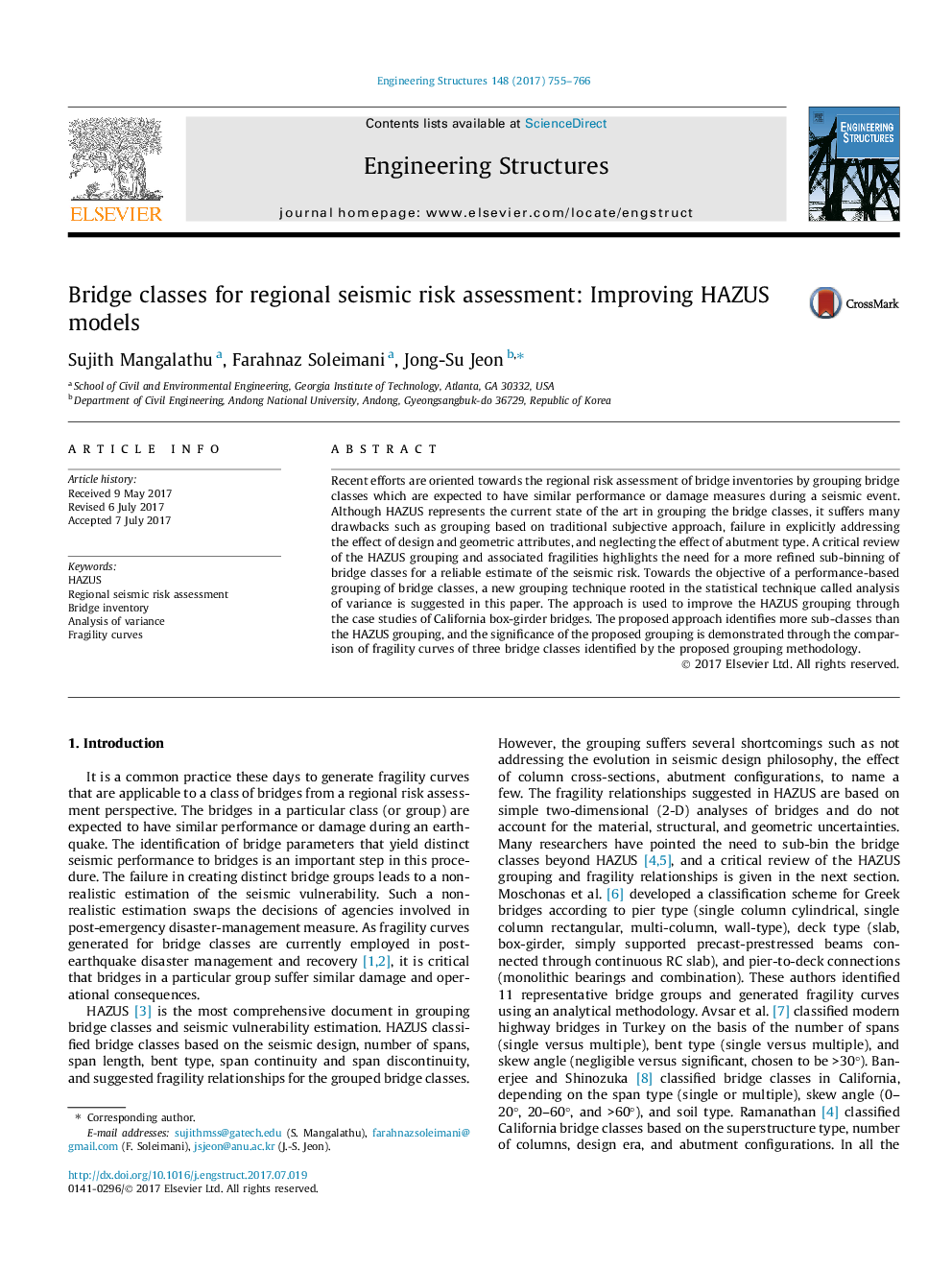| Article ID | Journal | Published Year | Pages | File Type |
|---|---|---|---|---|
| 4920032 | Engineering Structures | 2017 | 12 Pages |
Abstract
Recent efforts are oriented towards the regional risk assessment of bridge inventories by grouping bridge classes which are expected to have similar performance or damage measures during a seismic event. Although HAZUS represents the current state of the art in grouping the bridge classes, it suffers many drawbacks such as grouping based on traditional subjective approach, failure in explicitly addressing the effect of design and geometric attributes, and neglecting the effect of abutment type. A critical review of the HAZUS grouping and associated fragilities highlights the need for a more refined sub-binning of bridge classes for a reliable estimate of the seismic risk. Towards the objective of a performance-based grouping of bridge classes, a new grouping technique rooted in the statistical technique called analysis of variance is suggested in this paper. The approach is used to improve the HAZUS grouping through the case studies of California box-girder bridges. The proposed approach identifies more sub-classes than the HAZUS grouping, and the significance of the proposed grouping is demonstrated through the comparison of fragility curves of three bridge classes identified by the proposed grouping methodology.
Related Topics
Physical Sciences and Engineering
Earth and Planetary Sciences
Geotechnical Engineering and Engineering Geology
Authors
Sujith Mangalathu, Farahnaz Soleimani, Jong-Su Jeon,
